U.S. Military Used Christian NGO as Front for North Korea Espionage
THE PENTAGON’S MISSIONARY SPIES
U.S. Military Used Christian NGO as Front for North Korea Espionage
93
Photo: Saul Loeb/AFP/Getty Images

Matthew Cole
October 27 2015, 1:35 a.m.
ON MAY 10, 2007, in the East Room of the White House, President George W. Bush presided over a ceremony honoring the nation’s most accomplished community service leaders. Among those collecting a President’s Volunteer Service Award that afternoon was Kay Hiramine, the Colorado-based founder of a multimillion-dollar humanitarian organization.
Hiramine’s NGO, Humanitarian International Services Group, or HISG, won special praise from the president for having demonstrated how a private charity could step in quickly in response to a crisis. “In the aftermath of Hurricane Katrina,” read Hiramine’s citation, “HISG’s team launched a private sector operation center in Houston that mobilized over 1,500 volunteers into the disaster zone within one month after the hurricane.”
But as the evangelical Christian Hiramine crossed the stage to shake hands with President Bush and receive his award, he was hiding a key fact from those in attendance: He was a Pentagon spy whose NGO was funded through a highly classified Defense Department program.

Lt. Gen. William “Jerry” Boykin giving a speech at Colorado Christian University on Monday, May 2, 2011.
Photo: Aaron Ontieroz/Denver Post/Getty ImagesThe secret Pentagon program, which dates back to December 2004, continued well into the Obama presidency. It was the brainchild of a senior Defense Department intelligence official of the Bush administration, Lt. Gen. William “Jerry” Boykin. Boykin, an evangelical Christian who ran into criticism in 2003 for his statements about Islam, settled on the ruse of the NGO as he was seeking new and unorthodox ways to penetrate North Korea.
Long a source of great concern to the U.S. and Western Europe because of its nuclear program, North Korea was the most difficult intelligence target for the U.S. “We had nothing inside North Korea,” one former military official familiar with U.S. efforts in the country told me. “Zero.” But Hiramine’s NGO, by offering humanitarian aid to the country’s desperate population, was able to go where others could not.
It is unclear how many HISG executives beyond Hiramine knew about the operation; Hiramine did not respond to repeated requests for comment and neither did any of his senior colleagues. Few, if any, of the rest of the organization’s staff and volunteers had any knowledge about its role as a Pentagon front, according to former HISG employees and former military officials.
The revelation that the Pentagon used an NGO and unwitting humanitarian volunteers for intelligence gathering is the result of a monthslong investigation by The Intercept. In the course of the investigation, more than a dozen current and former military and intelligence officials, humanitarian aid workers, missionaries, U.S. officials, and former HISG staffers were interviewed. The U.S. government officials who were familiar with the Pentagon operation and HISG’s role asked for anonymity because discussing classified military and intelligence matters would put them at risk of prosecution. The Pentagon had no comment on HISG or the espionage operations in North Korea.
Before it was finally dismantled in 2013, Hiramine’s organization received millions in funding from the Pentagon through a complex web of organizations designed to mask the origin of the cash, according to one of the former military officials familiar with the program, as well as documentation reviewed for this article.
The use of HISG for espionage was “beyond the pale” of what the U.S. government should be allowed to do, said Sam Worthington, president of InterAction, an association of nearly 200 American NGOs. The practice of using humanitarian workers as spies “violates international principles” and puts legitimate aid and development workers at risk, he argued.
“It is unacceptable that the Pentagon or any other U.S. agency use nonprofits for intelligence gathering,” Worthington said. “It is a violation of the basic trust between the U.S. government and its civic sector.”
Kay Hiramine discussing his faith with Dave Yarnes and Gene Strite.
HISG WAS ESTABLISHED shortly after 9/11, when Hiramine led a group of three friends in creating a humanitarian organization that they hoped could provide disaster relief and sustainable development in poor and war-torn countries around the world, according to the organization’s incorporation documents.
In its first two years, HISG was little more than a fledgling faith-based charity. Just after the U.S. invaded Afghanistan, Hiramine and his friends shipped medical supplies to a hospital there. By 2003, HISG had collaborated with a small Pentagon group called the Afghanistan Reachback Office, which was set up to coordinate reconstruction activities.
That same year, Boykin was named deputy in the newly created office of the undersecretary of defense for intelligence. Boykin had a special operations career that spanned many of the U.S. military’s most high-risk missions prior to 9/11. He served as commander of the Army’s most elite unit, commonly known as Delta Force, and oversaw the Black Hawk Down mission in Somalia in 1993 and the hunt for Pablo Escobar in Colombia.
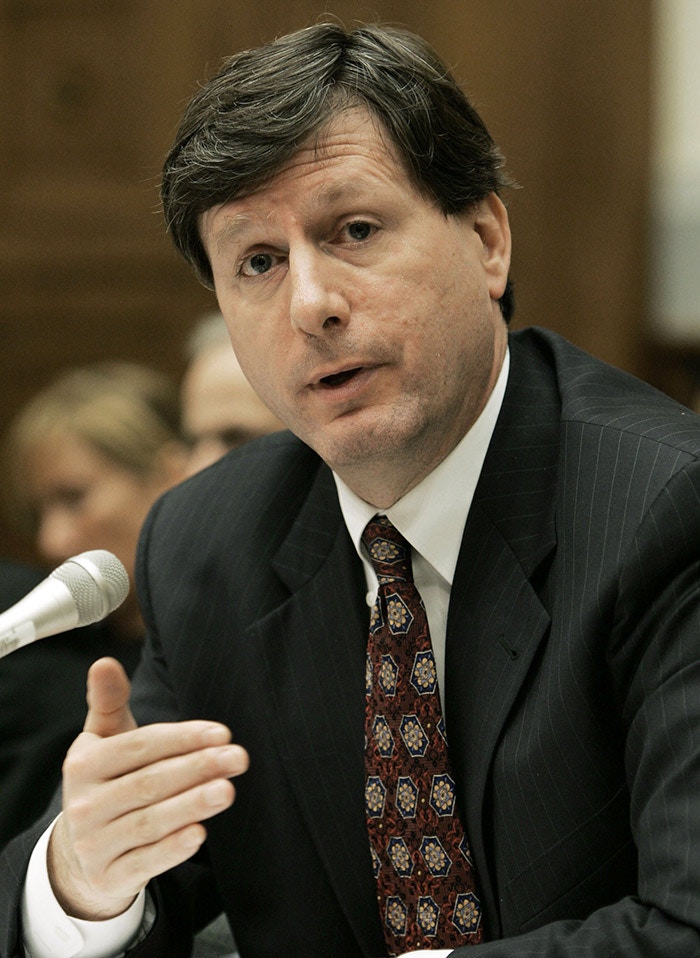
Stephen Cambone, undersecretary of defense for intelligence, on August 11, 2004, in Washington, D.C.
Photo: Mark Wilson/Getty ImagesWith the war on terror intensifying, Defense Secretary Donald Rumsfeld charged Boykin and his superior, Stephen Cambone, with the task of increasing the department’s ability to conduct intelligence operations independent from the CIA. Cambone and Boykin concluded that the Pentagon had ceded too much of its intelligence-gathering role in the preceding decades to the CIA, and it was time to recalibrate the balance. The CIA was kept in the loop. Within a year of his arrival to his new position at the Pentagon, Boykin dispatched a Pentagon staffer to the CIA to help coordinate the new and increased human intelligence operations abroad.
According to former military officials, Boykin took a page from the CIA’s playbook and looked for ways to provide cover for Pentagon espionage operations. Hiramine’s group was one of several NGOs used by the Pentagon in this way. Some, like HISG, already existed as fledgling organizations, while others were created from scratch by the Pentagon.
The espionage effort was one of the most secretive programs at the Pentagon, called an unacknowledged and waived “special access program,” or SAP. The designation meant that Defense Secretary Rumsfeld was required only to brief the chair and ranking members of both appropriations and armed services committees, who were not allowed to take notes or bring in staffers.
The Defense Department intelligence operations primarily focused on counterterrorism, but the efforts also extended to Iran and North Korea, where the military sought elusive intelligence on those countries’ nuclear programs.
That’s where HISG came in.
At the time the Pentagon program launched, the NGO had been responsible for many shipments of medical equipment, clothing, and disaster relief supplies around the world.
On at least one occasion in the period between 2004 and 2006, Hiramine, through HISG, helped coordinate a humanitarian shipment to North Korea.
The charity’s offer of donated clothing was the kind of faith-based donation the North Korean government would occasionally accept to help its population endure the country’s harsh winters. Unbeknownst to the North Korean government, however, underneath the clothing was a hidden compartment containing scores of bibles.
Shipping bibles into North Korea was risky — North Korea severely restricts any religious activities that deviate from communist ideology. But that was the point — if Hiramine’s bibles could make it, the Pentagon would know that it could use the same smuggling method to get military sensors and equipment into the country.
“We sent the bibles in as a test run,” a former senior Pentagon official told me. “They got through without the North Koreans discovering them.”
The Pentagon tasked Hiramine with gathering the intelligence it needed inside North Korea, and Hiramine would in turn utilize HISG’s access to the country to complete the assignments, according to two former military officials with knowledge of the effort. Hiramine, in his role as CEO of HISG, tapped Christian missionaries, aid workers, and Chinese smugglers to move equipment into and around North Korea — none of whom had any idea that they were part of a secret Pentagon operation.
On at least two different occasions, in 2007 and again in 2010, Hiramine entered North Korea under humanitarian cover, according to a former HISG employee familiar with his travel. HISG documents show that the organization boasted of having shipped winter clothing, including “ski jackets,” into North Korea during the NGO’s first 10 years of operation.

Kay Hiramine in North Korea, September 24, 2007.
Photo:Kay Hiramine/TwitpicBecause American intelligence has so few assets inside North Korea, much of Hiramine’s task was to find transportation routes to move military equipment — and potentially clandestine operatives — in and around the country. The Pentagon would eventually move sensors and small radio beacons through Hiramine’s transportation network, according to another former military official. Much of what Hiramine was doing was what the military refers to as “operational preparation of the environment,” or OPE, a category that encompasses clandestine intelligence gathering and prepositioning equipment inside a country for future conflicts.
“We needed collection devices, spoofers” — used to disrupt North Korean military devices or radio signals — “and [equipment] to measure nuclear anomalies,” the same former military official told me. The military hardware also included shortwave radios that could be used to help a downed pilot to escape in the event of a future conflict with North Korea.
None of the former officials with knowledge of the program whom I spoke with would say where exactly the equipment was positioned or describe the intelligence that Hiramine was able to gather, citing the sensitivity of the matter. But two former officials said the intelligence and the network used to gain access inside the country were formally distributed to the CIA in what the U.S. intelligence community calls IIRs, or “intelligence information reports,” indicating the CIA was aware the Pentagon was using an NGO to conduct the operations. The CIA referred all questions about Hiramine’s intelligence reports to the Pentagon.
“If true, to use unwitting aid workers on behalf of an intelligence operation, people who genuinely do humanitarian work, to turn their efforts into intel collection is unacceptable,” said Rep. Jan Schakowsky, who served on the House Intelligence Committee from 2007 until this year. Schakowsky said she was unaware of the program, and unaware of any briefings given to the committee chair and ranking members.
“Now we have people who have been hired to do some good work and become unwitting accomplices to an intelligence mission? They can face all kinds of retaliation. It is completely unacceptable,” Schakowsky said.
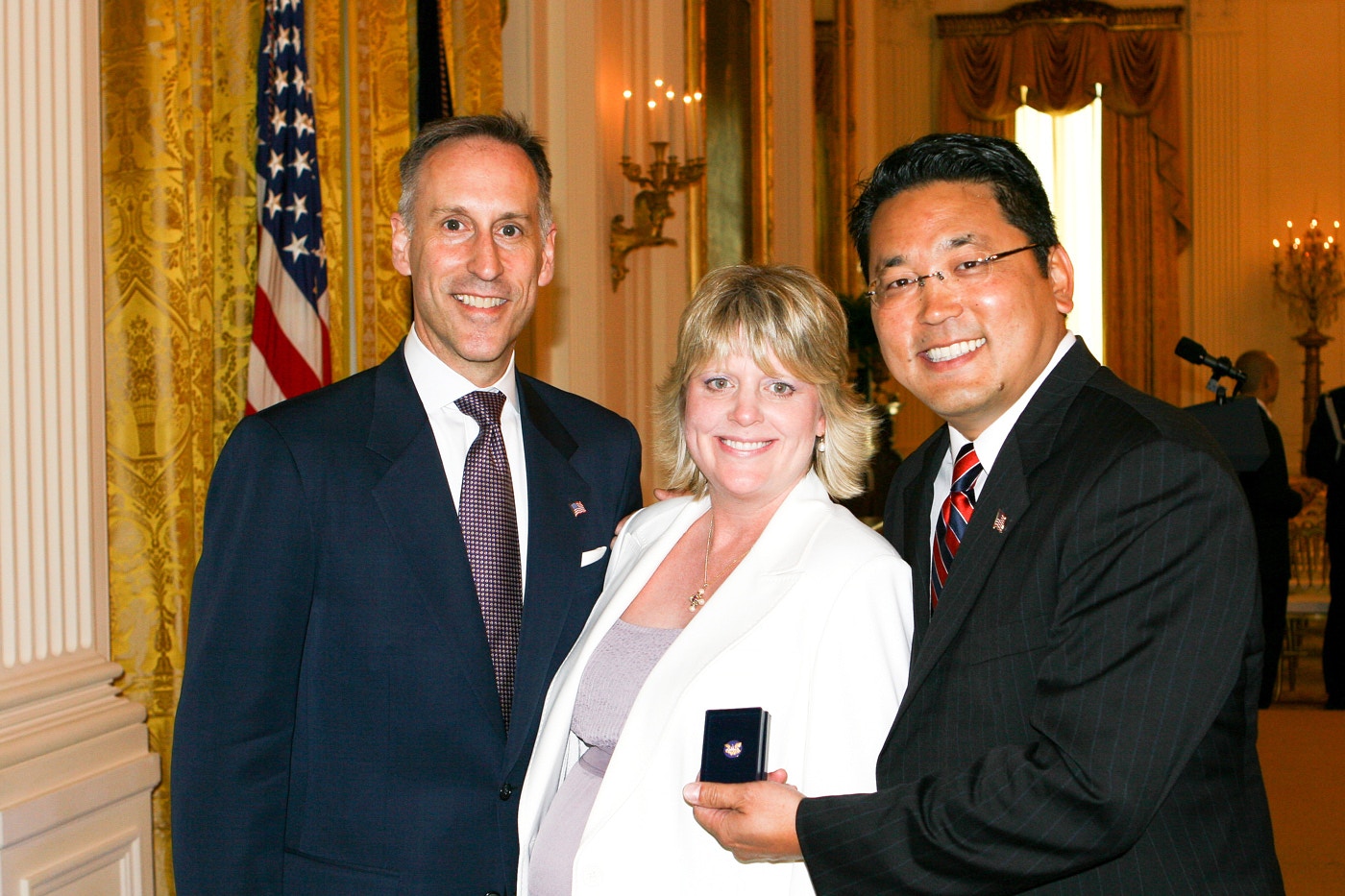
Jack Hawkins of USAID with Julie Hiramine and Kay Hiramine of Colorado Springs, Colo., receiving the President’s Volunteer Service Award at the White House, May 10, 2007.
Photo: M. T. Harmon/Nation Service
IT IS UNCLEAR how exactly Hiramine became involved in the Pentagon espionage effort, but his nonprofit presented a convenient vehicle for the Pentagon to hide intelligence-gathering missions and shipments of clandestine military equipment into denied areas.
Using an approach pioneered by the CIA, the Pentagon obscured the origin of the funding for the organization. “If you expose the money, you expose the network,” said a former military official who is critical of the program’s lack of oversight.
The organization received one stream of funding via a for-profit company called Private Sector Consulting, which was run by Hiramine, his partner Michael McCausland, and other HISG executives, and shared addresses and phone numbers with HISG in Colorado, according to public records. HISG reported in 2009 that it had no paid employees; its 30 staffers were designated “volunteers.” According to three people who worked for HISG, however, the salaries and benefits of the NGO’s employees were paid by the consulting firm. In 2009, for example, tax records show that Hiramine drew no salary as the head of Humanitarian International Services Group, yet earned $281,351 from Private Sector Consulting.
“It was our pure funding that made” HISG, one of the former military officials told me, explaining how the Pentagon provided the money for salaries to Private Sector Consulting.
A second revenue stream arrived at HISG via a private trust and another nonprofit, Working Partners Foundation, which was incorporated in late 2004, around the same time that Private Sector Consulting was launched and the Pentagon program was rolled out.
Here’s how it worked.
The Pentagon funneled money to the private fund, which was run out of a law office in Minnetonka, Minnesota, according to a former military official familiar with the arrangement. The fund, called New Millennium Trust, was run by retired Army Col. Thomas Lujan.
Lujan also had a historical distinction, according to an online bio: He was the first military lawyer assigned to Delta Force — and would have known Boykin most of his professional career. According to a public website, Lujan, who retired in 1998, still maintains top-secret government clearance. Lujan declined to comment.
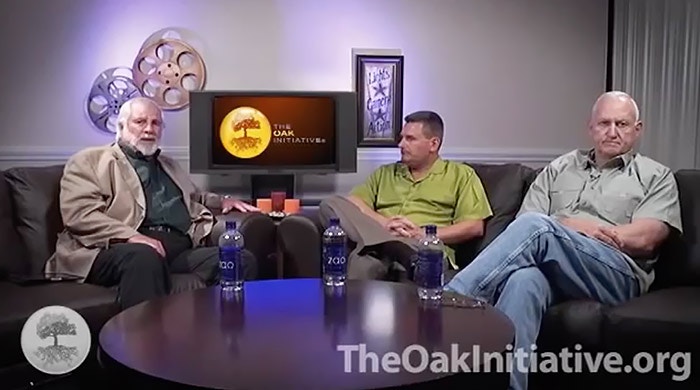
Screen grab of Yale King (center) and Boykin (right) on the Oak Initiative discussing King’s auto dealership.
Photo: The Oak InitiativeNext, according to tax filings, New Millennium Trust would donate money to Working Partners Foundation, which was run by a prominent Colorado car dealer named Yale King starting in October 2004. King was also a “dear friend” of Boykin. In his autobiography, Never Surrender, Boykin recalled receiving a fax from King while recuperating from an injury sustained during an attack on the U.S. base at Mogadishu’s airport. The fax consisted of a single Biblical verse. “I can’t explain why Yale sent that fax halfway around the world when he did,” Boykin wrote, “but I felt it was exactly the message God wanted me to hear.”
By 2006, responsibility for the program shifted away from Boykin. He retired in the summer of 2007. But the former military official critical of the effort called the HISG operation a “jobs program” for Boykin’s friends and former military colleagues. Boykin did not respond to requests for comment.
King earned $252,000 as the director of Working Partners Foundation in 2006. According to tax records, New Millennium Trust was the sole funder of Working Partners Foundation. The Pentagon money passed through King’s foundation, which made donations to Hiramine and HISG. In total, New Millennium Trust gave Working Partners Foundation $11.9 million between 2005 and 2014. Working Partners Foundation, in turn, passed $6.5 million to HISG between 2005 and 2012, according to tax filings.
To help Working Partners maintain the appearance of a legitimate charity, each year the foundation donated smaller amounts of cash to bona fide NGOs, such as Catholic Relief Services, which says it had no knowledge of any Pentagon link to the money. In at least one case, according to tax filings, Working Partners gave roughly $200,000 to a U.S.-based ministry that “deliver[s] Bibles … to the persecuted church in the Gospel restricted nation of North Korea.” Working Partners also funneled almost $500,000 to a medical charity run by Yale King’s wife in the first five years after Working Partners was established, according to tax records.
(King eventually moved Working Partners to Palm Beach, Florida, where it was transferred to a tax and estate lawyer named Robert Simses. Simses declined to comment, and King did not respond to multiple requests.)
One of the former military officials estimated that the Pentagon provided at least $15 million to HISG over the course of the program through these revenue streams.
“Kay never talked about where we got our funding from,” said Tom Jennings, who worked as HISG’s Asia program director for six years. “And I never felt that I was supposed to ask about it.” Jennings said he didn’t know that Hiramine had worked for the Pentagon on a secret espionage program, and now fears the revelations that HISG was funded by the Pentagon could taint the legitimate disaster relief and development programs he helped lead.
According to Hiramine’s LinkedIn profile, Private Sector Consulting “provided support services,” such as disaster response, to government agencies including the Department of Homeland Security, Department of Defense, and FEMA.
“I warned them they had to keep Private Sector Consulting separate,” said a former HISG employee, who was familiar with some of the contracts with the U.S. government. (This individual still works in humanitarian aid and did not want to be publicly associated with a Pentagon espionage program so was granted anonymity.) The former employee “didn’t have a clue” the nonprofit group was fronting for the Pentagon.
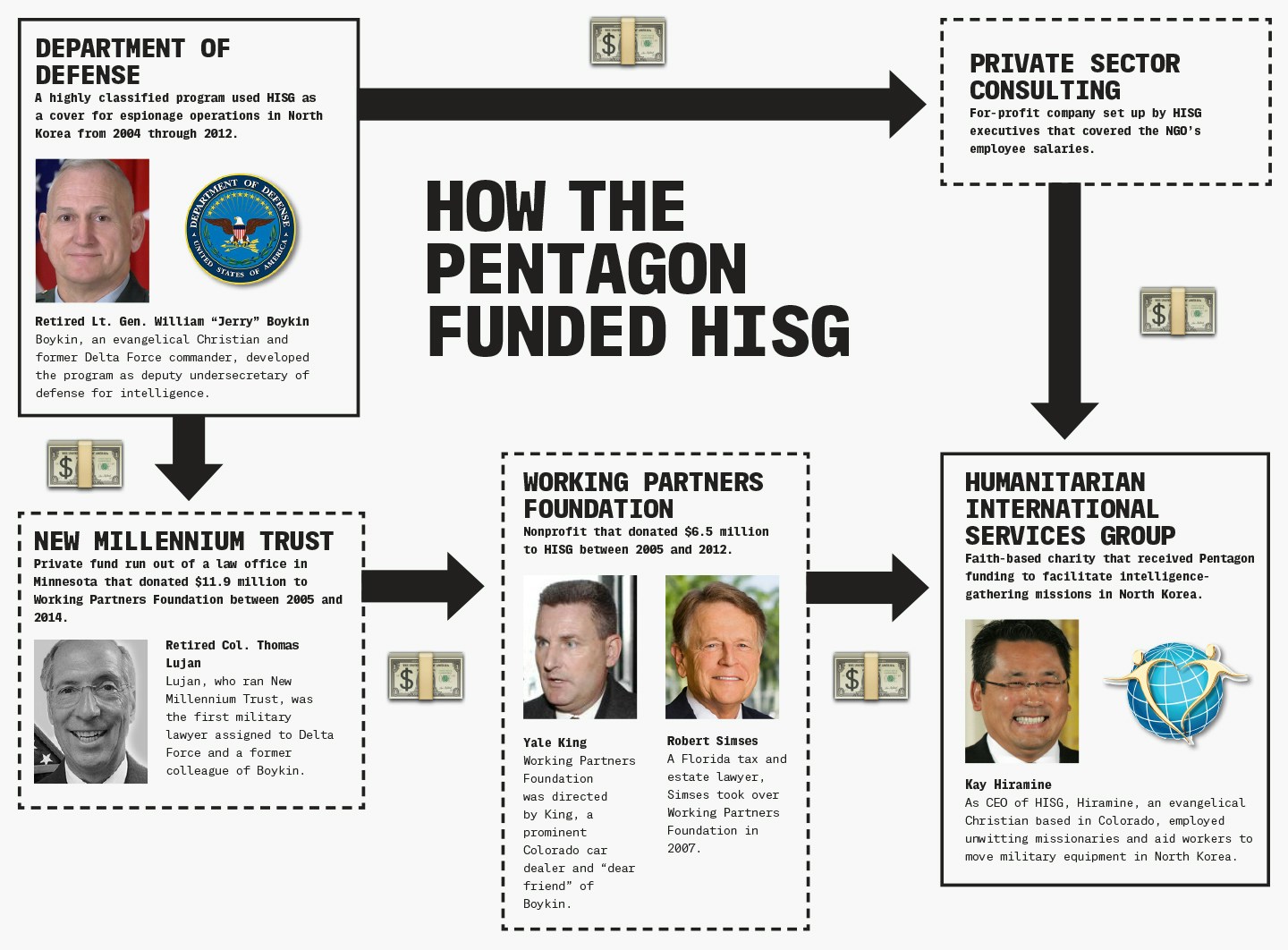
Photo: Hiramine, Boykin: Getty Images (2); King: AP
ASIDE FROM HIRAMINE and possibly other top executives, those who worked for HISG were never aware they were involved in a Pentagon intelligence program, or that Hiramine was working for the U.S. government, according to two former military officials.
“They were never witting,” said the former senior Pentagon official. “That was the point.”
In all, HISG operated in more than 30 countries, significantly funded by the Pentagon.
According to former employees, public records, and HISG’s former website, the nonprofit conducted disaster relief; provided food, medical supplies, and clothing; and helped start small businesses in countries including Niger, Mali, Ethiopia, Kenya, Iran, Lebanon, Yemen, and China.
“They gave us a tremendous latitude to do tremendous amounts of good,” Jennings said. “We were able to go to the poor in villages, train them how to start businesses and create jobs, so that they could begin to lift themselves out of poverty and regain their self-dignity. Looking back, that was one of the most fulfilling times in my life.”
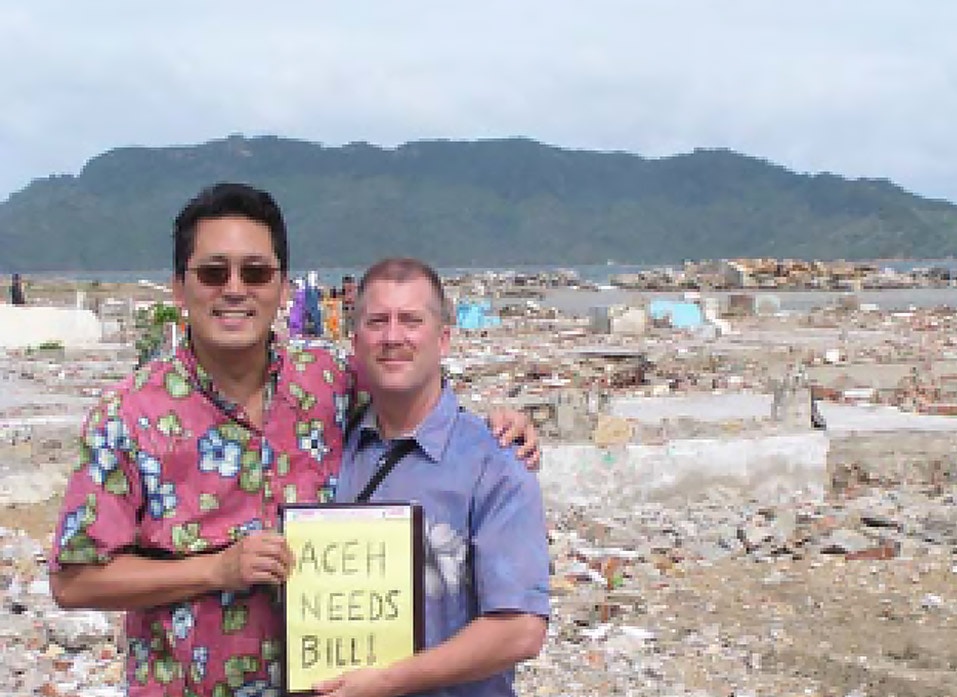
Kay Hiramine and Michael McCausland
Photo: HISGBut behind all the global charity work was an ulterior motive for military officials: The longer HISG operated and became more legitimate, the more opportunities would be available to U.S. military and intelligence officials to run operations in other countries as they had in North Korea. In other words, Hiramine’s ability to use HISG to form partnerships and working relationships with other unsuspecting aid workers and missionaries would give the Pentagon more places to spy, according to one of the former military officials. That official would not say whether Hiramine was tasked with operating in countries besides North Korea.
Hiramine and HISG were successful enough in their humanitarian efforts to garner that 2007 honor, the President’s Volunteer Service Award. It is not known if the White House was aware that HISG was part of a Pentagon program.
“If these people had been caught and tried and executed in downtown Pyongyang you’d really understand the risk,” said Robert Baer, a retired CIA officer who spent more than 20 years conducting espionage operations.
Using humanitarian and aid workers for gathering intelligence has always been risky. U.S. intelligence policy prohibits using American clergy, journalists, or Peace Corps volunteers as a cover to conduct espionage. Using NGOs is not strictly prohibited, but though it is not unprecedented, it is dangerous.
In recent years, the risk of using legitimate aid workers as cover for spying has had deadly repercussions.
In 2011, the CIA directed a Pakistani doctor to collect DNA samples of the suspected family members of Osama bin Laden under the guise of a hepatitis vaccination program in Abbottabad, Pakistan. After the raid, the Pakistani doctor was arrested and imprisoned by Pakistani authorities, and the Taliban later killed several medical professionals who were trying to conduct polio eradication campaigns, along with their guards.
The Taliban claimed the vaccination program was part of a Western intelligence plot. Cases of polio, which has been eradicated in almost every country in the world, have spiked in Pakistan in recent years. In 2014, a White House adviser informed U.S. public health school deans that the CIA is no longer allowed to use vaccination programs as an intelligence cover.
“The reward is almost zero given the risk because using NGOs — especially unwitting [ones] — produces very weak intelligence,” said Robert Baer, the retired CIA officer. “This is pure Graham Greene, Our Man in Havana stuff,” he continued, referring to the farcical tale of a vacuum cleaner salesman who was recruited to spy on Cuba’s missile program.
DESPITE STARTING DURING the Bush presidency, the North Korea espionage program continued through Obama’s first term. It’s unclear if the president was briefed. The White House declined to comment.
In 2012, now-retired Adm. William McRaven, the commander of the Special Operations Command in Tampa, Florida, who oversaw the Osama bin Laden raid, shut down the North Korea spying program.
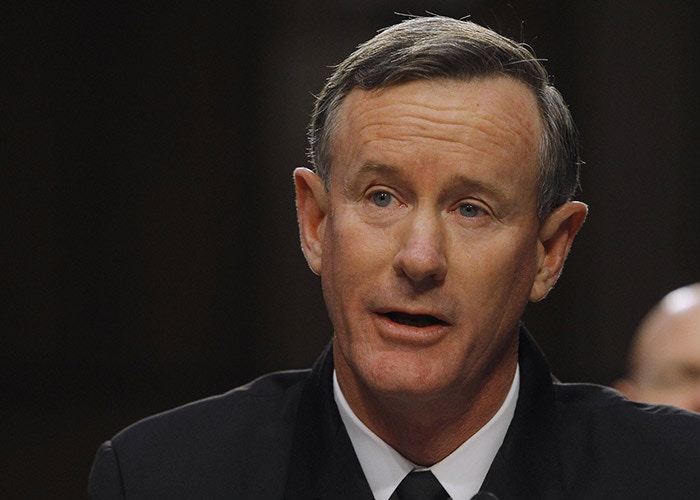
U.S. Navy Adm. William McRaven testifies before the Senate Armed Services Committee in Washington, March 5, 2013.
Photo: Gary Cameron/Reuters /Landov“McRaven told us he shut it down because he was nervous about the flap if it ever got out that the Pentagon had used a bunch of evangelicals and missionaries as spies,” said one former military officer, adding that if the program had produced better intelligence McRaven would have considered keeping it up and running. McRaven did not respond to a request for comment.
In January 2013, Hiramine and his fellow HISG executives announced to their employees that they were shuttering the organization. “We got no warning,” said Jennings, the former HISG program director. “We had no jobs, no severance, and no explanation. All they said was ‘we lost our funding.’”
According to Working Partners Foundation tax returns, 2013 was the first year since it began operating in 2005 that no funds were given to HISG. Instead, the nonprofit gave roughly $700,000 — funds that were likely allocated before McRaven ordered the program ended — to a range of relief and nonprofit groups, including a Washington-based defense think tank.
Some of HISG’s infrastructure remained, but Hiramine left and his main partner, Michael McCausland, transformed what was left of HISG into a new organization called Sustainable Communities Worldwide.
With HISG gone, the Pentagon began to dismantle the funding mechanisms that propped up the organization.
Private Sector Consulting was dissolved in December 2013, and this year, for the first time since it was created, Working Partners Foundation did not receive any money from New Millennium Trust.
According to tax filings, Working Partners wrote one final check for $475,500 to the Bureau of the Fiscal Service, a division of the Treasury Department, earlier this year. “The board of directors elected to terminate the foundation and pay all funds remaining to the United States treasury to be used to reduce the public debt,” according to public tax records. Working Partners was dissolved in January.
In other words, Working Partners gave its remaining funds as a gift to the federal government, a strange move for a private foundation — though not, perhaps, for one serving as cover for a now-terminated Pentagon program.
Update: October 28, 2015
This report makes reference to a donation from Working Partners Foundation to Catholic Relief Services, based on Working Partners Foundation’s tax filings. Catholic Relief Services, which conducted a review after publication, said its own records contained no indication it received money from Working Partners Foundation or HISG.
Margot Williams and Lee Fang contributed to this report.
Top photo: U.S. President George W. Bush with Kay Hiramine prior to presenting him with a President’s Volunteer Service Award on May 10, 2007, in the East Room of the White House (photo flipped).
We depend on the support of readers like you to help keep our nonprofit newsroom strong and independent. Join Us
No comments:
Post a Comment
Note: Only a member of this blog may post a comment.